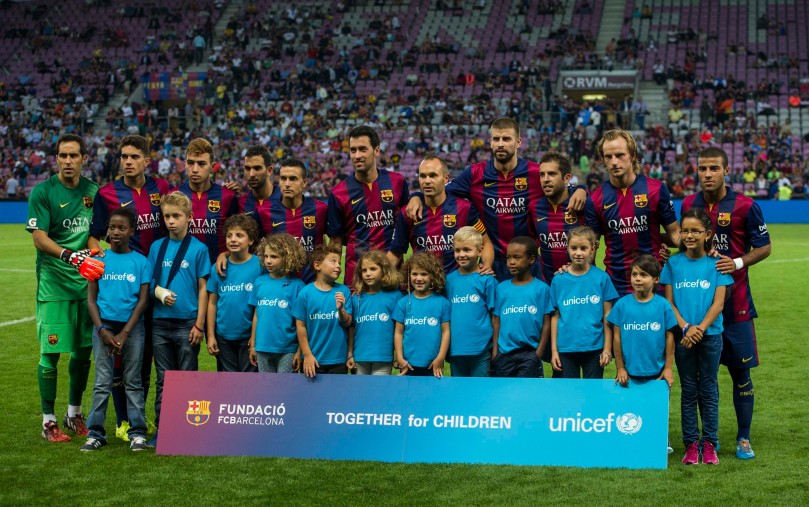
Norway is often categorised as a “smaller state” on the world stage, due to the size of its economy and population, coexisting in the shadow of major powers and medium-sized states. The aim of Norwegian public diplomacy is therefore to build an internationally acknowledged image based on Norwegian culture as well as the country’s relationship with nature (Government.no, 2013). Norway’s strategy is to showcase its vast resources, its engagement with publics home and with humanitarian issues abroad, and its reliability as a partner in international affairs as well as a provider for its own citizens (ibid). To achieve such goals, small-sized states are not able to take advantage of an already existing universal visibility and image in the same way major powers are, which makes it their public diplomacy’s main mission to capture the attention of the targeted international audience (Bátora, 2005:7).
Norway has been successful in capturing the attention of publics in positive matters or niches such as mediating peace processes in some of the world’s most conflict-torn regions and managing to appear bountiful and versatile in terms of natural resources and governance. However, it is not only the positive matters that gain the public’s attention, but the negative ones as well. One internationally disputable issue has in many minds had a negative impact on Norway’s image: the policy of whaling. Still in 2016 the Norwegian Government allows and encourages Norwegian whaling in the waters of its Exclusive Economic Zone despite the International Whaling Commission’s (IWC) ban on commercial whaling in force since 1986 (Norwegian Ministry of Trade, Industry and Fisheries, 2013). This activity has required advocacy on behalf of the state, and giving explanations and reasons for such actions to foreign publics in particular.
There is a contradiction between the Norwegian Government’s point of view on whaling and on the viewpoint of the rest of the world, excluding the two other whaling countries Iceland and Japan, who mostly share Norway’s opinion. From an internationally contested perspective whaling is not only unlawful under the international regulatory framework of the IWC, but also highly unnecessary. Whaling contributes gravely to extinction of various whale species, causing imbalances in the ecosystem, on the expense of whale-product trade, which has become rather needless in the contemporary economy, where plenty of alternatives, most often fishing, exists.
From the Norwegian Government’s perspective whaling is a traditional Norwegian livelihood and a method of maintaining a balanced ecosystem in the region’s waters (Norwegian Ministry of Trade, Industry and Fisheries, 2013). The Government, though being a member to the IWC, has added an objection to the 1982 moratorium on commercial whaling allowing it to hunt minke whales for commercial purposes, a right, which it exercises annually. Due to international environmental and ethical concerns, however, it is no wonder that Norwegian Government supported whaling raises a number of debates and frowned eyebrows amongst most publics across the globe.
First of all, in many cases making reservations and objections or refusing to fully sign up to international treaties, which are generally seen as beneficial to the entire planet or as gestures of good will, can put a state in a bad light. As Norway’s aim is to portray itself as a committed and strong partner in international interactions, its objection to the IWC moratorium might undermine this effort. Second of all, even though Norway wishes to build its international image based on its relationship with nature, hunting whales might not exactly be a crowd-pleaser. Whaling does not tend to belong to the equation when people think about the correlation between actions taken by a state and the positive impact on nature.
Withdrawing the objection and consequently ending state supported whaling would not only improve Norway’s image as an environmentally friendly and internationally cooperative state, but it would also mean an end to the Government’s need of explaining the world why Norway still persists to uphold this ancient activity. When small-sized states do not have the need to explain their activities to the publics, they have more resources to put into the most crucial task enabling them to stand out of the crowd and against the giant powers: capturing the attention of the audience in areas of expertise. Being already successful in gaining attention through numerous peace initiatives, Norway has great preconditions for developing a stronger, more positive and above all more coherent international image if it can overcome the issues whaling has caused to its otherwise impeccable reputation.
Bibliography
Bátora, J. (2005), ‘Public Diplomacy in Small and Medium-Sized States: Norway and Canada’, Clingendael Discussion Papers in Diplomacy No. 97, available at: www.clingendael.nl/publications/2005/20050300_cli_paper_dip_issue97.pdf.
Government.no (2013), Norway’s Image Abroad – a Shared Responsibility, available at: https://www.regjeringen.no/en/topics/foreign-affairs/int-cultural-engagement/norgesprofilering/image_abroad/id708753/, accessed 14 May 2016.
Greenpeace (2014), Norway and Whaling, available at: http://www.greenpeace.org/international/en/campaigns/oceans/fit-for-the-future/whaling/norwegian-whaling/, accessed 14 May 2016.
Norwegian Ministry of Trade, Industry and Fisheries (2013), Norwegian Whaling – based on a Balanced Ecosystem, available at: http://www.fisheries.no/ecosystems-and-stocks/marine_stocks/mammals/whales/whaling/#.VzbaYo-cFv0, accessed 14 May 2016.
Image 1 available at: https://media.guim.co.uk/13dd943c18ed82ce0742b2d8b8572f8a7504d687/0_0_2150_1291/master/2150.jpg.




